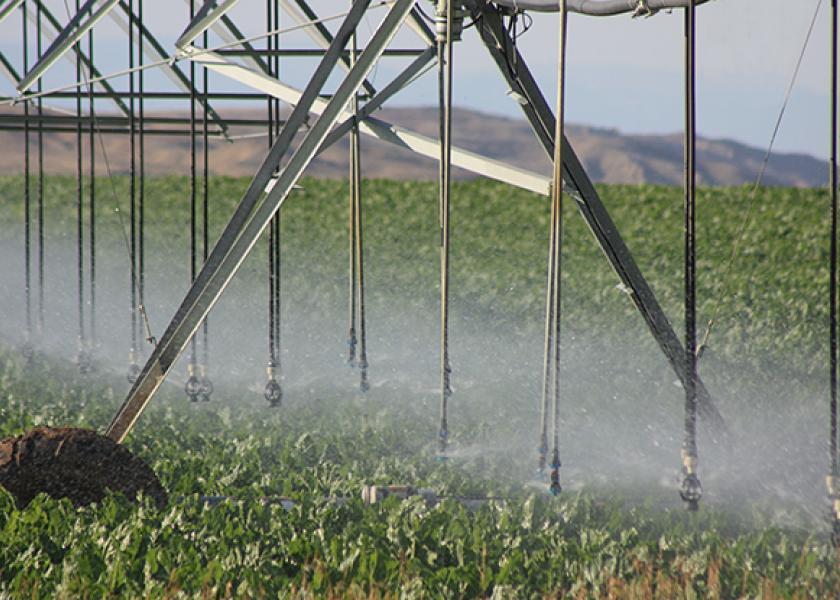Spring Water and Nutrient Management in Dairy Corn

Season-long farm management decisions will affect water use efficiency (WUE) of corn. Several decisions such as varietal maturity, planting date, weed control, and soil fertility management need to be made in the context of understanding certain on farm limitations such as irrigation water quality, irrigation system capacity, and seasonal availability of water for other crops. This article will discuss water and nitrogen management decisions which can be made in-crop.
Pre-plant water and soil nutrition decisions and weed control strategies were discussed in a Field Crops and Nutrient Notes article, so will not be discussed here, but it should be noted that these decisions have season-long impacts.
In-crop water decisions
Especially important to irrigation management for high yields in corn is irrigation timing. It is known that certain stages of corn’s plant growth cycle are more sensitive to the effects of drought stress on yield. Generally, these drought sensitive stages are in the late vegetative to early reproductive phases. Two weeks prior to tasseling and two weeks after silking are the most sensitive stages to drought stress, as this period is highly determinant of grain yield. Earlier drought stress will reduce the vegetative biomass and diminish the plants’ ability to draw from deeper soil profile reserves of water since roots will also be less developed. It is also recommended to avoid drought stress during grain fill, however deficit irrigation during this phase is managed in silage corn in order to harvest at around the 50% milkline stage. It has been shown that the highest quality dairy alfalfa silage cuts are usually made in the early part of the year and that alfalfa is highly resilient to summertime deficit irrigation. So, water may be diverted from alfalfa to corn during the summer to ensure an adequate supply for corn. Beware, the opposite is not true, since corn is relatively sensitive to drought stress.
In-crop nitrogen decisions
Dairy operators should work with their PCAs and CCAs to test lagoon water and irrigation well water NO3–N when either or both are used as irrigation sources in order to properly credit the N fertilizer value and apply it at a rate that is beneficial to the crop – when the crop demands it. Corn uptake rate of N closely matches the pattern for corn uptake rate of water. That is, much less N is demanded in early vegetative stages, but increases rapidly and peaks before tasseling, at which point it will slow during grain fill. Being able to irrigate with lagoon water offers dairy operators an advantage to apply nutrients when the crop needs it. Table 1 shows how to calculate the availability of N from irrigation water and from manure sources. Keep in mind that for dairies that make multiple applications of lagoon water or solids throughout the season, the amount of N that can be expected to mineralize within the first year will likely be 40-70% mineralized within 4-8 weeks after applying.







